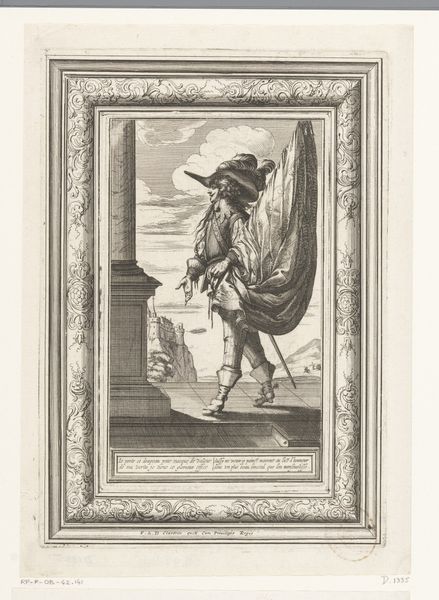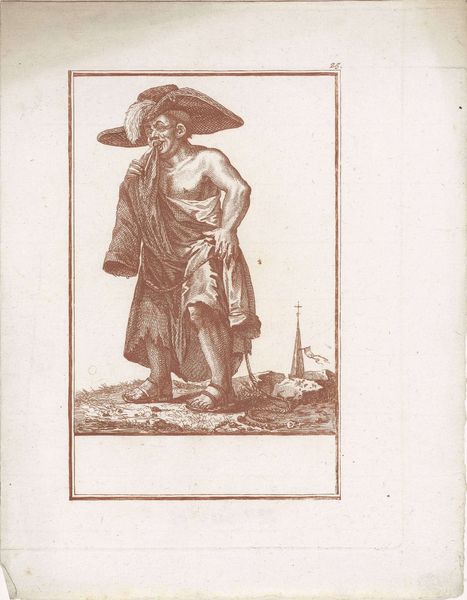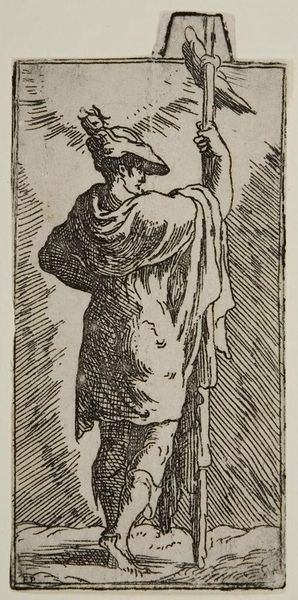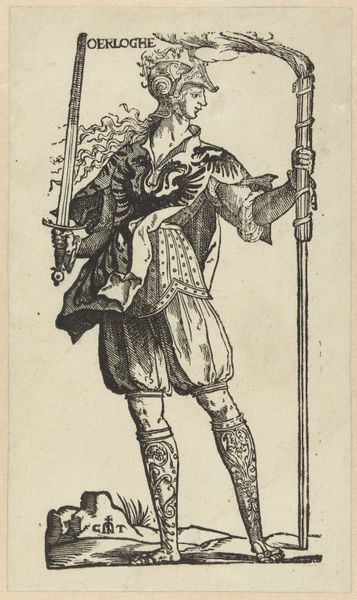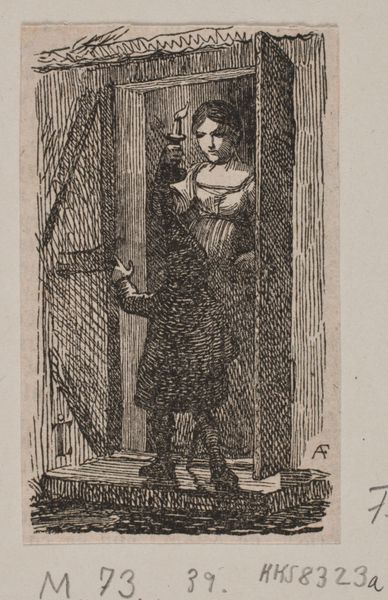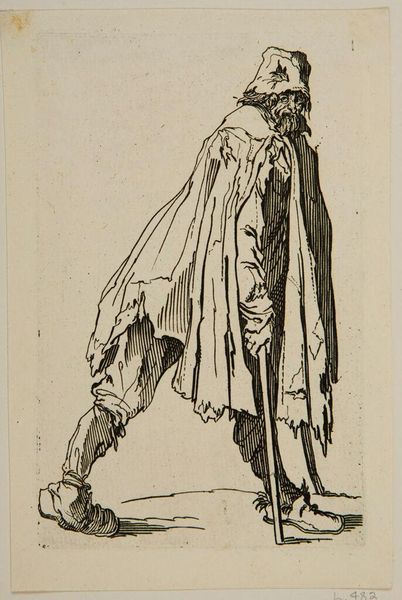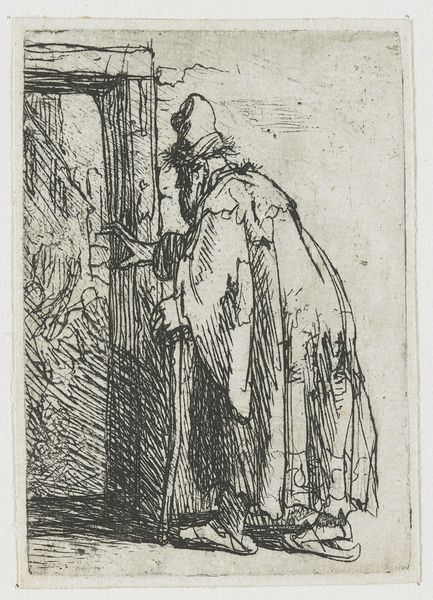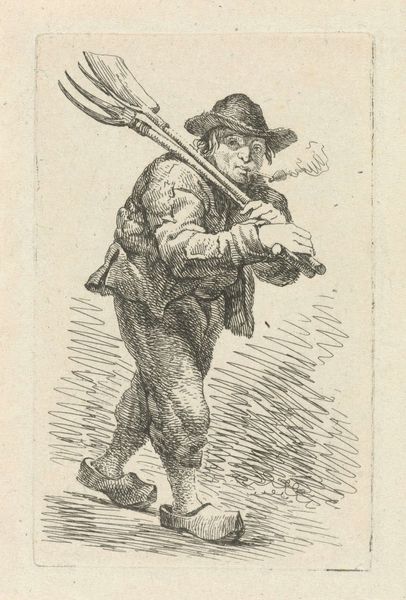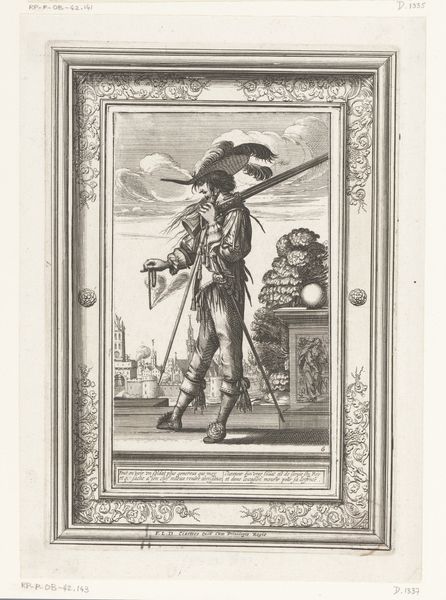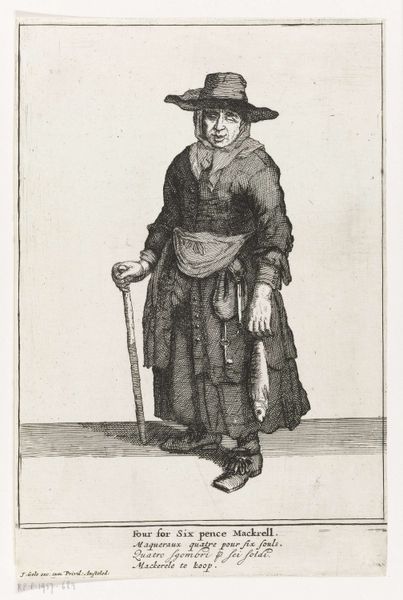
Dimensions: height 89 mm, width 51 mm
Copyright: Rijks Museum: Open Domain
Jan Gerard Smits created this etching of a man in seventeenth-century clothing in the Netherlands sometime between 1823 and 1910. At first glance, the image seems to be a straightforward depiction of historical dress. Yet, it subtly comments on the relationship between history, fashion, and national identity. During the 19th century, there was growing interest in the Dutch Golden Age of the 17th century, a time of great economic and cultural flourishing. Artists and writers looked back to this period for inspiration, seeking to define a distinctly Dutch identity, separate from other European powers. Smits's choice to depict a figure in 17th-century garb reflects this cultural trend. However, by presenting the figure in a doorway, he also suggests a separation between past and present. To understand this etching fully, we might consult fashion history and cultural studies. What did it mean to evoke the past in 19th-century Holland, and what role did artists like Smits play in shaping those meanings?
Comments
No comments
Be the first to comment and join the conversation on the ultimate creative platform.


